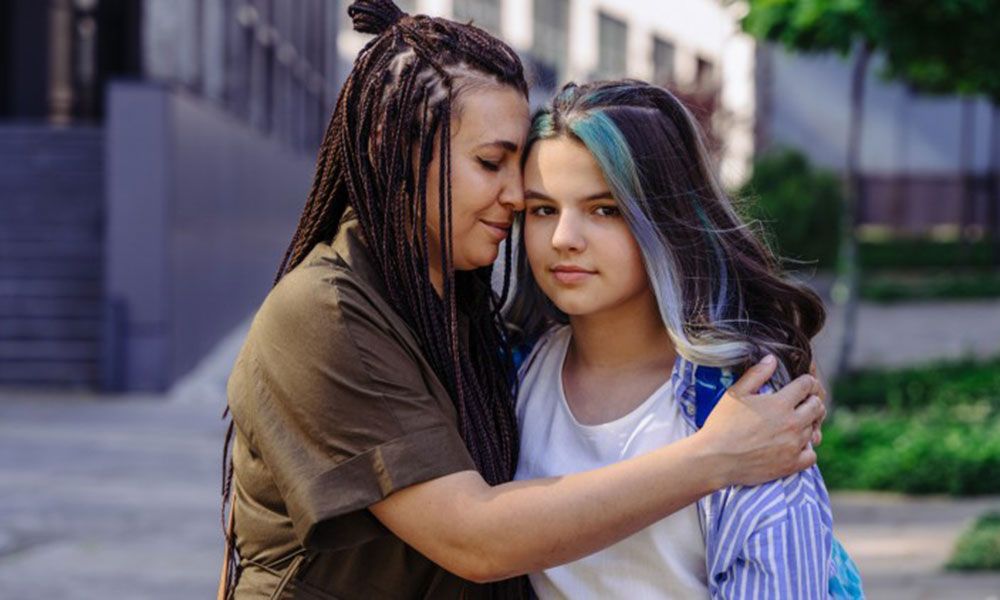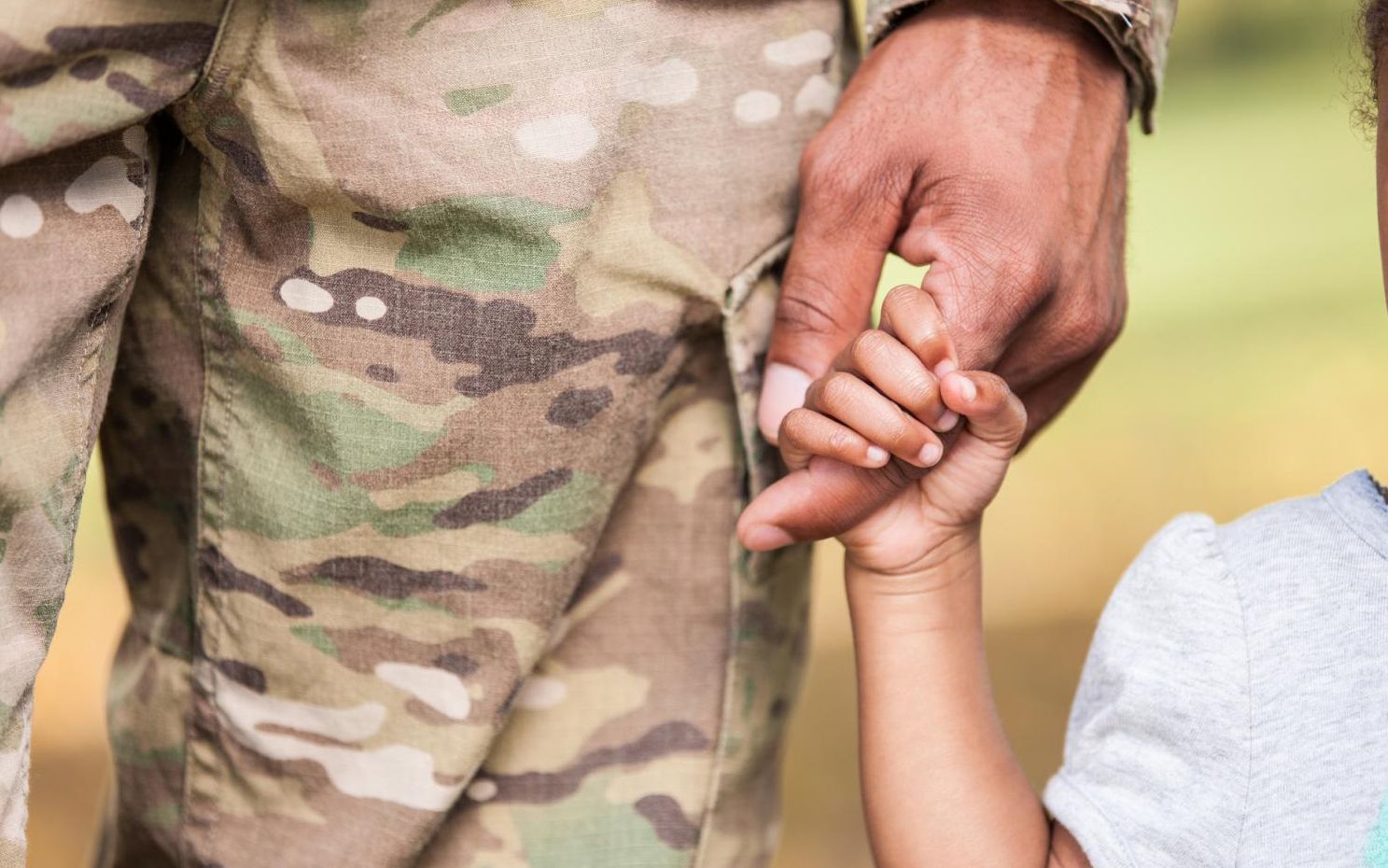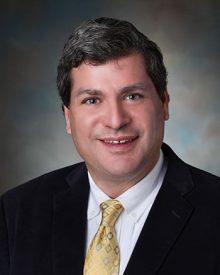Teaching mindfulness to help navigate change

Rob-with-bell
At the Art of Discovery booth at the 2019 Arts Festival, Roeser and members of the Department of Human Development and Family Studies, including Molly Countermine and Blake Colaianne, taught kids how to practice mindfulness and compassion with meditative glitter jars and mindfulness mandalas.
August 30, 2021
When thinking of mindfulness and compassion and why they are important, Robert Roeser, professor of human development and family studies and Bennett Pierce Professor of Care and Compassion, remembers a story he was told in India about two kinds of trees: the coconut tree and the mango tree.
The coconut tree grows tall, and its fruits are high up and out of reach. It doesn’t offer much shade to sit under, and it might even drop a coconut on your head. In contrast, the mango tree grows low and broad, and has many fruits among its branches. Birds can eat from the tree, and diverse families, children, and animals can find solace in its shade.
For Roeser, a person who practices mindfulness and compassion in their daily life is becoming like a mango tree, and the world needs more mango trees. Unfortunately, modern educational practices, from kindergarten through post-secondary education, are often designed to produce people who are like coconut trees.
“Mindfulness and compassion are about changing ourselves to become the kind of person who other people want to be around—the kind of person who makes space for others and shows them kindness, respect, attention, and empathy; the kind of person who isn’t always trying to assert personal views but can listen, and be curious and receptive,” said Roeser.
“By teaching students at all levels basic mindfulness and compassion techniques, we can start to create new generations of students with the attention, social-emotional maturity, and systems-thinking skills they will need to flourish. We can fundamentally impact the business decisions we make, the ways we raise our children and interact with our neighbors and community members, even how we plant our gardens. We can become like mango trees, changing ourselves and the environment around us in ways that contribute positively to the world.”
Starting young: Teaching mindfulness in K-12 schools
To understand the potential value of mindfulness and compassion training in education, Roeser and his research collaborators focus on so-called “windows of opportunity” during human development when introducing such techniques may be most beneficial: early childhood and the transition to elementary school, early adolescence and the transition to secondary school, and early adulthood and the transition to college or career.
“Our strengths and vulnerabilities show through most when we make a big life change. Major life transitions are thus times of significant change and growth. Prevention scientists have suggested that helping young people navigate these life changes using mindfulness and compassion practices has enduring impacts.”
Roeser began studying the effects of mindfulness education in pre-kindergarten through 12th grade schools while at Portland State University, and his research is still conducted in schools in the greater Portland area today. Roeser and his long-time collaborator Andrew Mashburn received a research grant to study the MindUP for Life curriculum and resources developed by The Goldie Hawn Foundation to support students transitioning to kindergarten.
Although the study has been disrupted by the pandemic, Roeser and Mashburn will eventually be able to see how this mindfulness-based, social-emotional learning program helps young children develop attention and self-regulation skills, as well as social skills like kindness, forgiveness, and mindful listening. As students in the study grow, Roeser and Mashburn will explore how well the students who received the MindUP program do academically, socially, and emotionally through the developmental transition to kindergarten and during their first year in school.
Supporting educators and schools
In addition to teaching mindfulness to the students, Roeser and his collaborators teach these same techniques to middle school teachers and provide resources to help them remain calm, clear, and kind in their daily classroom interactions with students. The researchers offered one group of teachers a 10-week mindfulness program—Mindfulness-Based Emotional Balance, developed by Margaret Cullen—and examined the program’s impacts on the teachers’ stress and wellbeing.
Although the program was designed primarily to improve teachers’ health and well-being—and there was evidence that it did—Roeser and his colleagues also examined and found evidence that teachers who engaged in the mindfulness program also showed improvements in their in-class behavior with students in their most stressful classroom.
“These practices not only helped them personally: they seemed to impact the frequency with which teachers interacted with students in developmentally appropriate ways,” said Roeser. “We saw that teachers were less reactive and punitive, and more proactive and autonomy-supportive in the ways they managed student behavior in their most stressful classrooms.”
Ultimately, it may be that teaching mindfulness in schools, to both students and teachers simultaneously, is the most advantageous approach to produce significant societal returns on investments in programming. Studies show that self-regulation and prosocial skills in early childhood are associated with lower unemployment, criminal activity, substance use, and mental health struggles later in life. Similarly, stress management and wellness for teachers may lead to less turnover, fewer absences and illnesses, and—not least—more effective teaching. Understanding how mindfulness programs in schools might contribute to these societal returns on investment remains a key part of this work going forward.
The Art and Science of Human Flourishing
As students progress from adolescence and young adulthood, Roeser and collaborators see another window of opportunity for engaging in contemplative practices like mindfulness and compassion: the transition to college.
The stress of moving from high school to college is considerable, and it is no secret that there is a mental health crisis on many college campuses today. As in early childhood and adolescence, research shows that young adults can derive tangible benefits from practices that help them live in the moment with awareness, acceptance, and kindness, as well as sharing their experience with others going through similar life transitions.
“Little children, because their memories haven’t developed to a certain extent, live in the here and now. They live in their senses and in their physical body much more than adults do. As we develop language and more abstract conceptual thinking, we start to live in the past and the possible future,” said Roeser. “These cognitive advances can also bring excessive rumination—instead of reflection—on the past and excessive worry—instead of planning—regarding the future. As we develop, we start to lose touch with our senses, our bodies, and our experience of the here and now. So we have to train ourselves to come back to the present moment and our senses to integrate these different ways of being.”
The demands of the transition to college led the Student Flourishing Initiative to create a new course for first-year college students, The Art and Science of Human Flourishing. The course—developed as a collaboration between researchers at Penn State, the University of Virginia, and the University of Wisconsin—teaches students about the concept of human flourishing, and perhaps more importantly, how to cultivate self-regulation and prosocial skills through mindfulness and compassion practices that can support their transitions into and through college.
Roeser and collaborators’ research evidence suggests that the course cultivates a number of positive coping skills, including attention skills like mindfulness, emotional skills like resiliency, and social skills like empathy and compassion. Students also feel less anxious and depressed and more joy and connection after the course—what Roeser considers flourishing—by utilizing the skills they learn. A study during the COVID-19 pandemic shows that students taking the course were coping better than the control group 6 to 18 months after they had taken the course.
How to practice mindfulness
To begin implementing mindfulness practices into daily life, Roeser suggests adding mindful awareness to our daily routines—a present-focused, open, and curious approach to the tasks we already do each day. Mindful walking, mindful listening, mindful eating, mindfulness to the changing seasons, even mindful bathing, are all ways to focus on the here and now, and gradually cultivate a more awakened approach to our lives and the people in it. Encouraging ourselves to stay in the moment with a curious and accepting attitude is the key. He also recommends making time in one’s day for a guided meditation.
Take a moment and try mindfulness of sound and silence, a favorite meditative technique of Roeser’s. Sit wherever you are in a comfortable position with your spine straight. You can keep your eyes open or closed. Focus on the sounds that are happening around your body to the right, left, front, back, above, and below yourself. Notice how silence may also exist in these directions. Try to let the sounds and silence be as they are, don’t try to change them, tune them out, push them away, or engage with them. Just take a few moments to notice and rest in the sound and silence around you. After this mindful pause, go on with your life.
Finding time for moments like this to pause, breathe, and let things be is the first step to integrating mindfulness into one’s daily life. When we make time for mindfulness and compassion, we become more like a mango tree, supporting and respecting not only ourselves, but providing comfort and nourishment to those in the world around us.
Story Source: HHD Magazine
Teaching mindfulness to help navigate change

Rob-with-bell
At the Art of Discovery booth at the 2019 Arts Festival, Roeser and members of the Department of Human Development and Family Studies, including Molly Countermine and Blake Colaianne, taught kids how to practice mindfulness and compassion with meditative glitter jars and mindfulness mandalas.
August 30, 2021
When thinking of mindfulness and compassion and why they are important, Robert Roeser, professor of human development and family studies and Bennett Pierce Professor of Care and Compassion, remembers a story he was told in India about two kinds of trees: the coconut tree and the mango tree.
The coconut tree grows tall, and its fruits are high up and out of reach. It doesn’t offer much shade to sit under, and it might even drop a coconut on your head. In contrast, the mango tree grows low and broad, and has many fruits among its branches. Birds can eat from the tree, and diverse families, children, and animals can find solace in its shade.
For Roeser, a person who practices mindfulness and compassion in their daily life is becoming like a mango tree, and the world needs more mango trees. Unfortunately, modern educational practices, from kindergarten through post-secondary education, are often designed to produce people who are like coconut trees.
“Mindfulness and compassion are about changing ourselves to become the kind of person who other people want to be around—the kind of person who makes space for others and shows them kindness, respect, attention, and empathy; the kind of person who isn’t always trying to assert personal views but can listen, and be curious and receptive,” said Roeser.
“By teaching students at all levels basic mindfulness and compassion techniques, we can start to create new generations of students with the attention, social-emotional maturity, and systems-thinking skills they will need to flourish. We can fundamentally impact the business decisions we make, the ways we raise our children and interact with our neighbors and community members, even how we plant our gardens. We can become like mango trees, changing ourselves and the environment around us in ways that contribute positively to the world.”
Starting young: Teaching mindfulness in K-12 schools
To understand the potential value of mindfulness and compassion training in education, Roeser and his research collaborators focus on so-called “windows of opportunity” during human development when introducing such techniques may be most beneficial: early childhood and the transition to elementary school, early adolescence and the transition to secondary school, and early adulthood and the transition to college or career.
“Our strengths and vulnerabilities show through most when we make a big life change. Major life transitions are thus times of significant change and growth. Prevention scientists have suggested that helping young people navigate these life changes using mindfulness and compassion practices has enduring impacts.”
Roeser began studying the effects of mindfulness education in pre-kindergarten through 12th grade schools while at Portland State University, and his research is still conducted in schools in the greater Portland area today. Roeser and his long-time collaborator Andrew Mashburn received a research grant to study the MindUP for Life curriculum and resources developed by The Goldie Hawn Foundation to support students transitioning to kindergarten.
Although the study has been disrupted by the pandemic, Roeser and Mashburn will eventually be able to see how this mindfulness-based, social-emotional learning program helps young children develop attention and self-regulation skills, as well as social skills like kindness, forgiveness, and mindful listening. As students in the study grow, Roeser and Mashburn will explore how well the students who received the MindUP program do academically, socially, and emotionally through the developmental transition to kindergarten and during their first year in school.
Supporting educators and schools
In addition to teaching mindfulness to the students, Roeser and his collaborators teach these same techniques to middle school teachers and provide resources to help them remain calm, clear, and kind in their daily classroom interactions with students. The researchers offered one group of teachers a 10-week mindfulness program—Mindfulness-Based Emotional Balance, developed by Margaret Cullen—and examined the program’s impacts on the teachers’ stress and wellbeing.
Although the program was designed primarily to improve teachers’ health and well-being—and there was evidence that it did—Roeser and his colleagues also examined and found evidence that teachers who engaged in the mindfulness program also showed improvements in their in-class behavior with students in their most stressful classroom.
“These practices not only helped them personally: they seemed to impact the frequency with which teachers interacted with students in developmentally appropriate ways,” said Roeser. “We saw that teachers were less reactive and punitive, and more proactive and autonomy-supportive in the ways they managed student behavior in their most stressful classrooms.”
Ultimately, it may be that teaching mindfulness in schools, to both students and teachers simultaneously, is the most advantageous approach to produce significant societal returns on investments in programming. Studies show that self-regulation and prosocial skills in early childhood are associated with lower unemployment, criminal activity, substance use, and mental health struggles later in life. Similarly, stress management and wellness for teachers may lead to less turnover, fewer absences and illnesses, and—not least—more effective teaching. Understanding how mindfulness programs in schools might contribute to these societal returns on investment remains a key part of this work going forward.
The Art and Science of Human Flourishing
As students progress from adolescence and young adulthood, Roeser and collaborators see another window of opportunity for engaging in contemplative practices like mindfulness and compassion: the transition to college.
The stress of moving from high school to college is considerable, and it is no secret that there is a mental health crisis on many college campuses today. As in early childhood and adolescence, research shows that young adults can derive tangible benefits from practices that help them live in the moment with awareness, acceptance, and kindness, as well as sharing their experience with others going through similar life transitions.
“Little children, because their memories haven’t developed to a certain extent, live in the here and now. They live in their senses and in their physical body much more than adults do. As we develop language and more abstract conceptual thinking, we start to live in the past and the possible future,” said Roeser. “These cognitive advances can also bring excessive rumination—instead of reflection—on the past and excessive worry—instead of planning—regarding the future. As we develop, we start to lose touch with our senses, our bodies, and our experience of the here and now. So we have to train ourselves to come back to the present moment and our senses to integrate these different ways of being.”
The demands of the transition to college led the Student Flourishing Initiative to create a new course for first-year college students, The Art and Science of Human Flourishing. The course—developed as a collaboration between researchers at Penn State, the University of Virginia, and the University of Wisconsin—teaches students about the concept of human flourishing, and perhaps more importantly, how to cultivate self-regulation and prosocial skills through mindfulness and compassion practices that can support their transitions into and through college.
Roeser and collaborators’ research evidence suggests that the course cultivates a number of positive coping skills, including attention skills like mindfulness, emotional skills like resiliency, and social skills like empathy and compassion. Students also feel less anxious and depressed and more joy and connection after the course—what Roeser considers flourishing—by utilizing the skills they learn. A study during the COVID-19 pandemic shows that students taking the course were coping better than the control group 6 to 18 months after they had taken the course.
How to practice mindfulness
To begin implementing mindfulness practices into daily life, Roeser suggests adding mindful awareness to our daily routines—a present-focused, open, and curious approach to the tasks we already do each day. Mindful walking, mindful listening, mindful eating, mindfulness to the changing seasons, even mindful bathing, are all ways to focus on the here and now, and gradually cultivate a more awakened approach to our lives and the people in it. Encouraging ourselves to stay in the moment with a curious and accepting attitude is the key. He also recommends making time in one’s day for a guided meditation.
Take a moment and try mindfulness of sound and silence, a favorite meditative technique of Roeser’s. Sit wherever you are in a comfortable position with your spine straight. You can keep your eyes open or closed. Focus on the sounds that are happening around your body to the right, left, front, back, above, and below yourself. Notice how silence may also exist in these directions. Try to let the sounds and silence be as they are, don’t try to change them, tune them out, push them away, or engage with them. Just take a few moments to notice and rest in the sound and silence around you. After this mindful pause, go on with your life.
Finding time for moments like this to pause, breathe, and let things be is the first step to integrating mindfulness into one’s daily life. When we make time for mindfulness and compassion, we become more like a mango tree, supporting and respecting not only ourselves, but providing comfort and nourishment to those in the world around us.
Story Source: HHD Magazine
Related People
Related People









